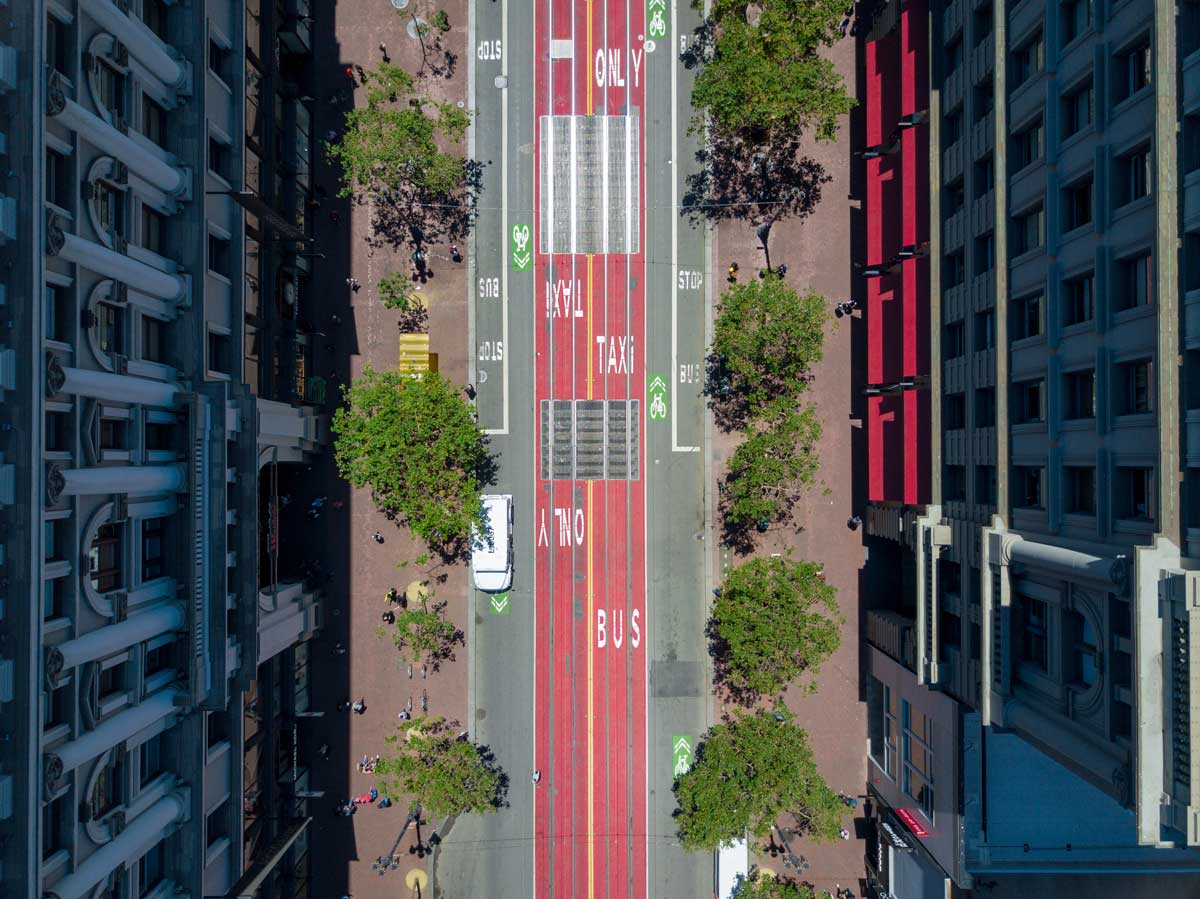What if there was an efficient way to pick up transit passengers safely without disturbing traffic flow?
Let us introduce to you in-lane bus stops.
In-lane bus stops or “In-Stream Bus Stops” refers to transit vehicles picking up passengers without ever leaving the driving lane on a particular route. This makes transit times and pickups more efficient, resulting in a better riding experience and improved traffic flow.
However, implementation along a route and within a city landscape can be challenging, so transit priority, signal priority, markings, and efficient route directions are vital to making it work for your city.
First, what is an in-lane bus stop?
Believe it or not, there are various ways a public transportation bus can stop on a route that promotes safety for motorists, bus drivers, and riders.
The most common types include:
- In-lane stops,
- Median stops,
- Island stops,
- Pull-out stops,
- and boarding stops (like you see at the airport)
An in-lane bus stop means the bus always stays in the lane it is driving.
The upside to in-lane stops is that buses never have to merge back into oncoming traffic (as they’re already in the stream).
Another version of these lanes is “Bus-Only Lanes” or “red-carpet lanes.” These lanes are dedicated to just buses or give public transit the highest priority. During off-hours, these lanes can be used by motorists.
These lanes are often marked with “Bus Only” markings like the one pictured below:
Properly implementing in-lane stops.
Saving time and promoting safety is always a bonus for city managers and transportation authorities. However, proper implementation of in-lane stops requires some planning.
In-lane or curb stops, where a transit bus does not have to merge back into general traffic, are the most budget-friendly option if the stop already exists. In addition, signage and giving motorists clear indications of bus-only lanes (by painting lanes red) keep traffic flowing and public bus riders safer.
Pros of in-lane bus stops include:
- Prevent sudden merging that may cause accidents by motorists
- A bus does not have to worry about pulling over and merging back into oncoming traffic
- Safer for drivers, riders, and motorists
- Lanes can be used for traffic overflow with proper signage
- Emergency vehicles can use the dedicated lane space
- Increase schedule reliability by reducing time to complete movement pulling in and out of a dedicated stop
Cons of in-lane bus stops:
- Typically works where speeds of streets generally are lower than 30 MPH
- Must have lane space available to properly implement (or build out a new lane which can be expensive)
- Without queue jump technology, it can be inefficient at congested intersections
The Final Take –
Overall, the city landscape is changing daily with more efficient technology, green-friendly initiatives, and transportation policies promoting safety for all.
You may have seen in-lane or in-stream bus stops before in large cities. Wherever there is a significant public transportation sector, dedicated lanes are reserved for bus stops.
In some cases, bus stops are in-stream, and the lane is not a dedicated lane for a bus only. These can confuse with merging/remerging, so proper signage and guidance are imperative.
To learn how LYT can assist in implementing transit signal prioritization, reach out below to learn more.
Related reads:




